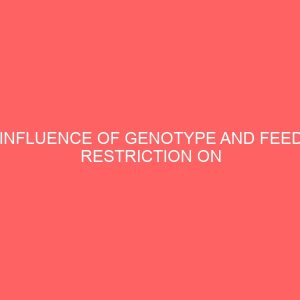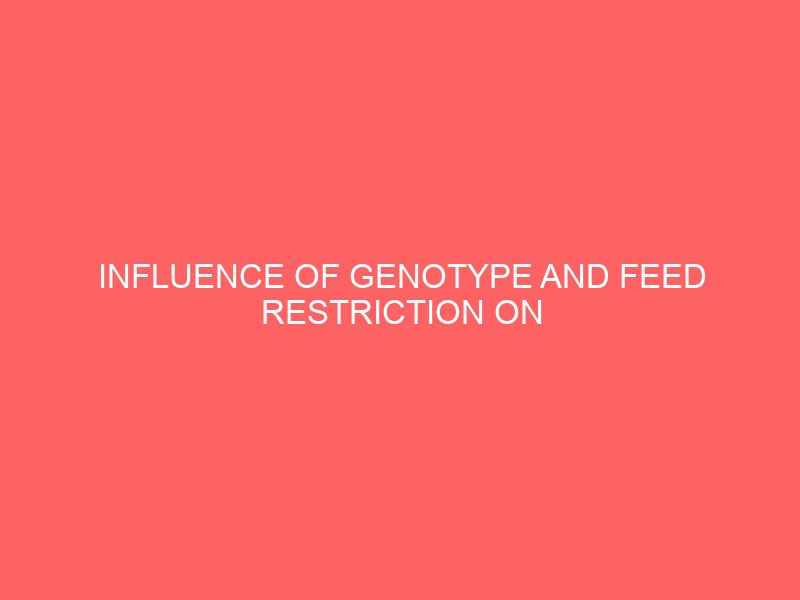Description
ABSTRACT
Data on 102 progeny of New Zealand White (NZ), Chinchilla (CH) and Dutch (DU) breeds of rabbits and their crossbreds obtained from birth to 14 weeks were used for this study. Genotype and feeding regime were the factors of interest. The genotypes were New Zealand White x New Zealand White (NZxNZ), Chinchilla×Chinchilla (CHxCH), Dutch×Dutch (DU×DU), New Zealand White x Chinchilla (NZxCH), New Zealand White x Dutch (NZxDU) and Chinchilla×Dutch (CHxDU).The feeding regime consists of ad libitum feeding (A), 14 hours feed restriction/day (B), 10 hours feed restriction/day (C) and 6 hours feed restriction/day (D). The experiment was conducted at the National Agricultural Extension Research and Liaison Services (NAERLS) Skill Acquisition Farm, Ahmadu Bello University, Zaria-Nigeria. The traits studied at pre-weaning were litter size at birth (LSB), litter weight at birth (LWB), litter size at week 2 (LSW2), litter body weight at week 2 (LBW2), litter size at week 4 (LSW4), litter body weight at week 4 (LBW4), litter size at week 6 (LSW6) and litter body weight at week 6 (LBW6). Traits studied after weaning were body weight (BW), body length (BL), chest girth (CG), head-to-shoulder(HS), shoulder-to-tail drop (ST), length of hind leg (LHL), ear length (EL) and height at withers (HTW). Data collected were subjected to Analysis of variance and correlation procedure in SAS and a fixed effect model was used for the analysis with significant means separated using Duncan Multiple Range Test. There were significant (P<0.05) differences among the genotypes for LWB, LBW2, LBW4, LBW6 and post-weaning growth performance at the different ages. Chinchilla x Chinchilla was superior over other genotypes for most of the post-weaning growth traits studied at different ages (480.00 g, 650.00g, 941.30 g, 1206.00 g and 1401.75g mean body weights at week 6, 8, 10, 12 and 14 respectively). This was followed by CHxDU (476.30 g, 601.30 g, 751.00 g, 910.00 g and 1086.25 g for the same parameters. The coefficients of correlation were from low to high (0.00-0.99) and were positively and negatively correlated in all the genotypes except for CHxDU which were all positive. The results indicated that CHxCH and CHxDU genotypes could be most suitable for optimum genetic improvement. The mean body weights obtained were 772.67±38.72 g, 688.62±32.16 g, 730.75±35.24 g and 705.37±33.45 g for feeding regime A, B, C and D respectively which were not significantly different (P>0.05). It can be concluded that CHxCH genotype performed better in most of the post-weaning growth traits and rabbit farmers can use any of the feeding regimes especially during scarcity of feed and forages for rabbit feeding. The CHxCH is recommended for higher litter size and body weight at weaning while any of the feeding regimes can be adopted.







